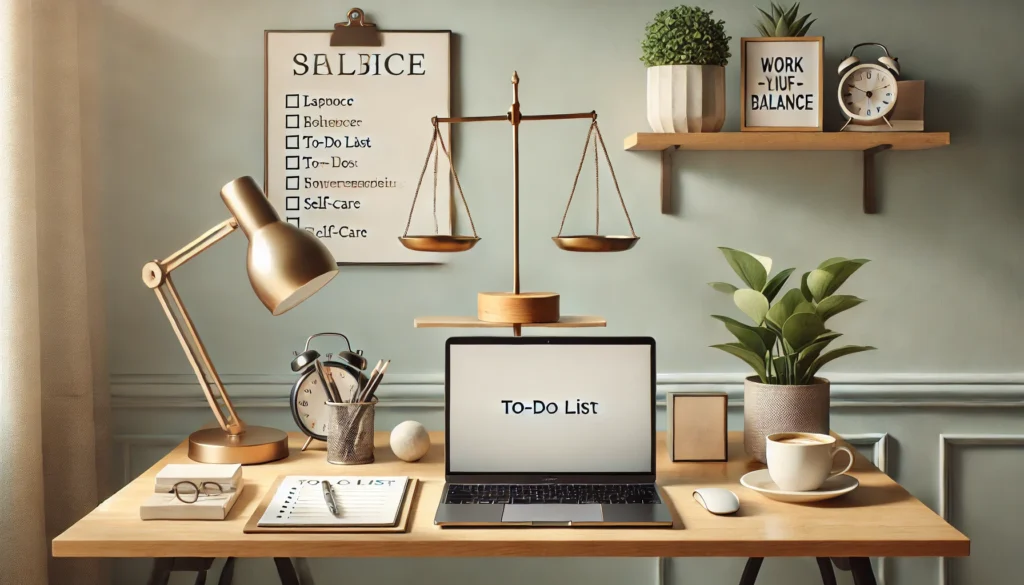How to Maintain a Healthy Work-Life Balance for Increased Productivity
In today’s fast-paced world, it’s easy to fall into the trap of overworking, especially when you’re focused on achieving professional success. However, maintaining a healthy work-life balance is crucial not only for your personal well-being but also for boosting productivity. By finding harmony between work and personal life, you can reduce stress, improve mental health, and enhance your overall efficiency. In this article, we will explore practical strategies for maintaining a healthy work-life balance to increase productivity.
1. Understand the Importance of Work-Life Balance
Before diving into how to achieve work-life balance, it’s important to recognize why it matters. A balanced life allows you to recharge, improve your mental health, and maintain strong relationships with loved ones, all of which contribute to greater productivity when you’re working.
Why Work-Life Balance is Essential:
- Reduced Stress: Balancing work and personal life helps prevent burnout and reduces the negative effects of stress.
- Improved Focus and Energy: Taking time for yourself allows you to return to work feeling refreshed and energized, boosting your focus and productivity.
- Better Relationships: A healthy work-life balance ensures you have time to nurture relationships with family and friends, contributing to emotional well-being.
When you focus on achieving a balance, you can perform better in both your personal and professional life.
2. Set Clear Boundaries Between Work and Personal Time
One of the most effective ways to maintain a work-life balance is by setting clear boundaries between your professional responsibilities and personal life. Without boundaries, it’s easy for work to spill into your personal time, leading to stress and burnout.
How to Set Boundaries:
- Create a Dedicated Workspace: If you work from home, designate a specific area for work. This helps you mentally separate work from relaxation.
- Set Working Hours: Establish clear work hours and stick to them. Avoid checking emails or working outside these hours.
- Communicate Boundaries: Let colleagues and family members know when you’re in “work mode” and when you’re off-duty.
By setting boundaries, you ensure that you can fully engage in work during designated hours and fully relax when you’re off.
3. Prioritize Your Tasks and Focus on What Matters Most
To achieve a healthy work-life balance, you need to prioritize your tasks effectively. Not every task requires your immediate attention, and focusing on the most important tasks can free up time for your personal life while ensuring productivity at work.
How to Prioritize Tasks:
- Use Time Management Tools: Tools like to-do lists, calendars, or task management apps help you stay organized and focused on priorities.
- Learn to Delegate: Delegate tasks that others can handle to free up time for more important responsibilities.
- Practice the 80/20 Rule: Focus on the 20% of tasks that provide 80% of your results and avoid spending too much time on low-impact activities.
By focusing on high-priority tasks and delegating the rest, you can manage your workload more efficiently and make room for personal time.
4. Make Time for Self-Care and Rest
Self-care is an essential part of maintaining a healthy work-life balance. Regular breaks, relaxation, and time for physical and mental health can help prevent burnout and ensure that you have the energy to stay productive in both work and life.
Self-Care Tips:
- Exercise Regularly: Physical activity boosts energy, reduces stress, and improves focus.
- Take Breaks: Throughout the day, take short breaks to recharge. Step outside, stretch, or meditate.
- Sleep Well: Prioritize good sleep hygiene and get enough rest to maintain mental clarity and physical health.
When you prioritize self-care, you’ll have the energy and motivation to perform well both at work and in your personal life.
5. Learn to Say No
A crucial aspect of achieving work-life balance is learning how to say no. Taking on too many commitments, whether at work or in your personal life, can quickly lead to overwhelm and burnout. Setting boundaries and learning to decline tasks that don’t align with your goals or values is essential.
How to Say No:
- Evaluate Requests: Before agreeing to take on new work or commitments, assess if it aligns with your current priorities and schedule.
- Be Honest: Politely explain that you’re unable to take on additional tasks at the moment, focusing on your current commitments.
- Don’t Overcommit: Be mindful of your time and energy. Saying no when necessary helps you protect your work-life balance.
Learning to say no allows you to focus on what’s truly important and preserve your energy for what matters most.
6. Take Advantage of Flexible Work Options
Many workplaces now offer flexible work options, such as remote work, flexible hours, or compressed workweeks. These options can help you better manage your time and create a balance that suits your lifestyle.
How to Utilize Flexible Work Options:
- Work from Home: If your job allows it, consider working from home to save time on commuting and create a more comfortable work environment.
- Adjust Your Hours: Talk to your employer about adjusting your work hours to accommodate personal commitments or peak productivity times.
- Explore Compressed Workweeks: Some companies offer the option of working longer hours for fewer days, giving you more time off.
By leveraging flexible work options, you can create a schedule that works for you and better manage your work-life balance.
7. Disconnect and Unplug
In the age of technology, it’s easy to feel like you’re always “on.” Constant emails, notifications, and work-related communications can intrude on your personal time and prevent you from fully relaxing. Disconnecting from work-related technology is a vital part of maintaining a healthy work-life balance.
Tips for Disconnecting:
- Set Screen-Free Times: Designate specific times each day when you disconnect from screens, such as during meals or before bedtime.
- Turn Off Work Notifications: After hours, turn off work-related notifications to avoid being constantly interrupted.
- Engage in Offline Activities: Spend time engaging in hobbies or activities that don’t involve technology, like reading, cooking, or exercising.
By disconnecting from work-related technology, you create space for relaxation and personal time, which is essential for a healthy work-life balance.
Conclusion: Achieving Work-Life Balance for Greater Productivity
Maintaining a healthy work-life balance is crucial for long-term productivity and well-being. By setting clear boundaries, prioritizing tasks, making time for self-care, and utilizing flexible work options, you can strike a balance that allows you to excel in both your professional and personal life. Remember, balance is not about being perfect—it’s about making conscious choices that help you stay productive, energized, and fulfilled in all aspects of your life.


